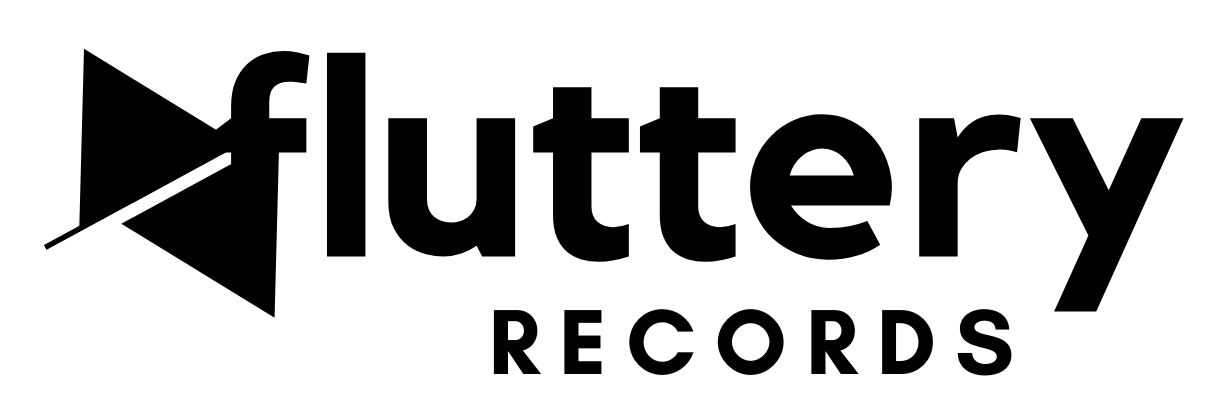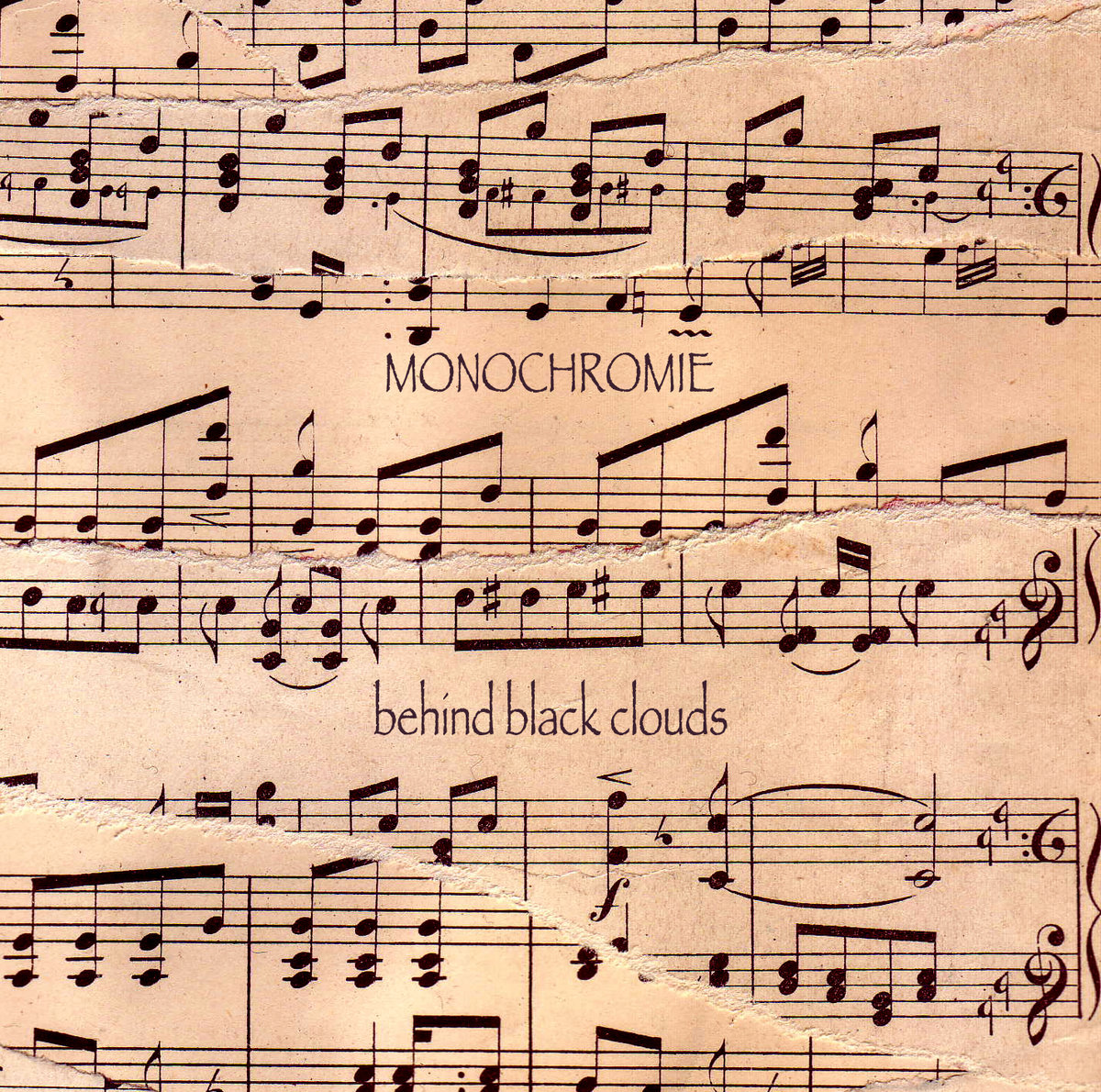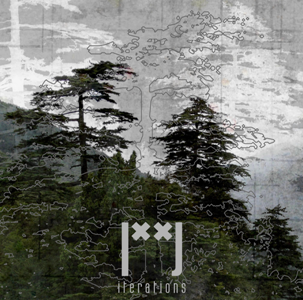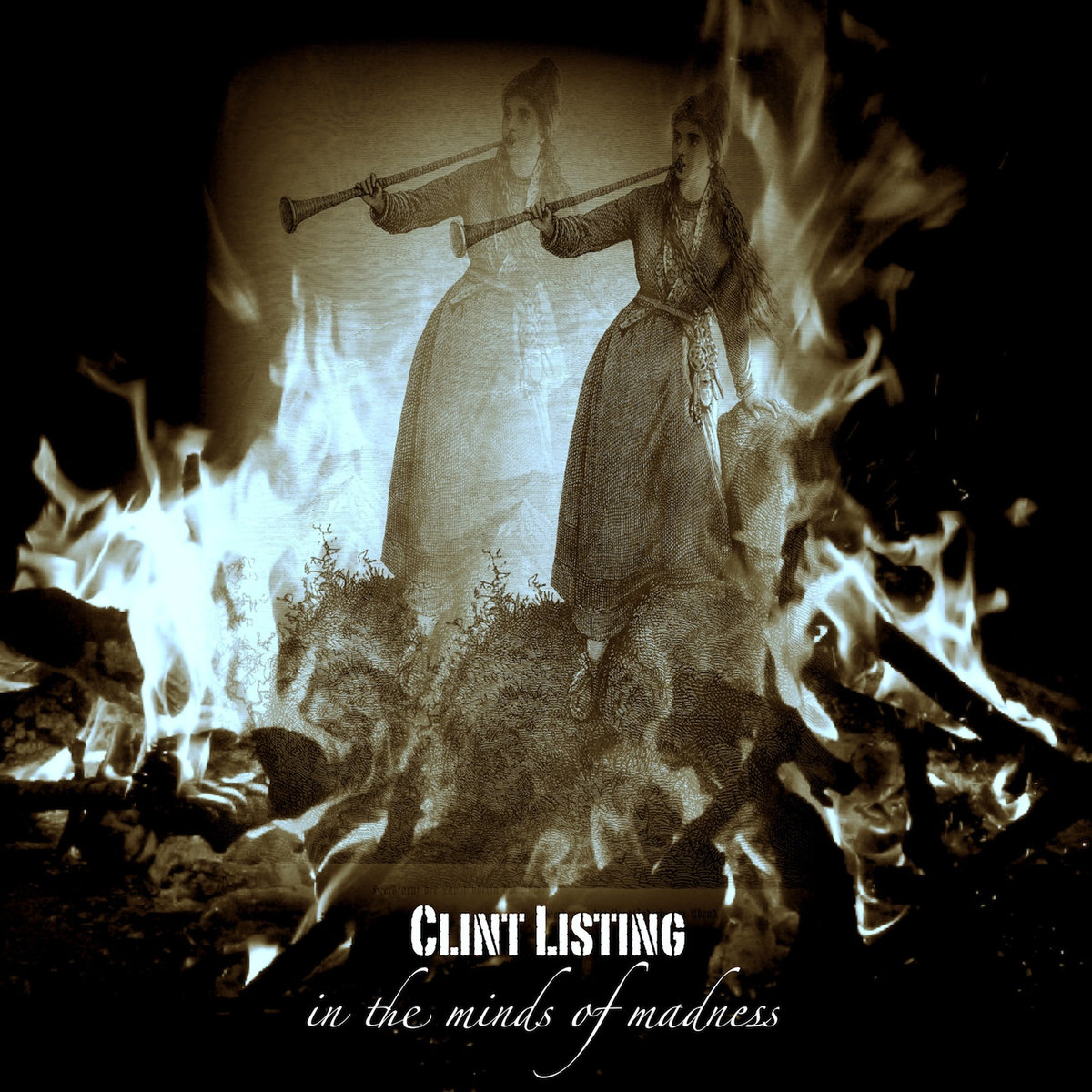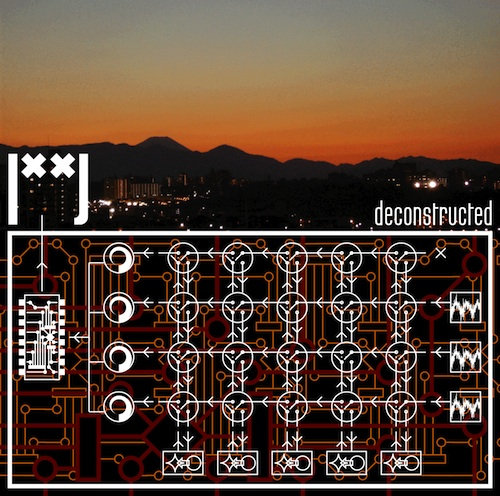Tag: noise music
Monochromie – Behind Black Clouds
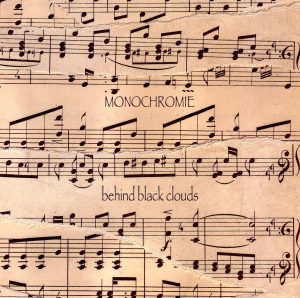
LISTEN
Track List
1. Vertiges Part 1
2. L’envolée
3. We Are Not Afraid (Sometimes a Rainbow)
4. Fade Away
5. Distance
6. Interlude
7. Heart Beat
8. Hawks (Happiness Version)
9. Polyhymnia
10. The Lost Victory
11. Noise
12. Ethereal Lights
13. Vertiges Part 2
Monochromie - Behind Black Clouds
Monochromie is a musical project of Wilson Trouvé. His music is emerging from many melting spots on borders of ambient, noise and post-rock; thus every song created is a pure original with the resonance of a particular atmosphere. Dark or luminous, hot or cold, wind or earth - attentive ear will detect them all. Sigur Ros, Pan American, Explosions in the Sky, Godspeed You Black Emperor, Thee Silver Mt Zion, Brian Eno, Ryuichi Sakamoto & Alva Noto or Frederic Chopin, Erik Satie and the sonatas or impromptus of Franz Schubert are among the many influences of the artist.
In 2012, he released his debut "Angels And Demons" on Fluttery Records and received the most flattering reviews. A year later, his second release "Enlighten Yourself While You Sleep" clearly contrasted with his previous piece, what only proved artists skilfulness and versatility. Between the first album releases and his latest piece, which we are going to present to you shortly, Wilson was not neglecting his career and self-released two EP, "Winter" in 2014 and "Brussel-Zuid" in 2015.
Today, he is coming with his brand new album "Behind Black Clouds". Who could introduce his art better than the composer himself?
"After a full year of composition, I am excited to finally present my fourth album: Behind Black Clouds. Like in the past, the process was erratic. Some tracks I could start and complete within a single day. Other took me weeks, even months, to come maturity. I try to keep the ear on the ground of my emotions, my mood and feelings. The time has to be right." says Wilson.
Album's core instrument is a piano. Even though most of his album was composed in his studio in Marseille, the piano types varies according to a place Wilson was in. Piano recordings together with samples taken from the street and with melodies, basic music editing effects and other instruments like metallophone or melodica created wonderful music carrying the right expression achieved through balance in artist's creative process.
Wilson further says: "Of course, the visual artist that I am influences the way I perceive and use sound. I literally view it as a palpable texture, one that can be sculpted, modeled, blended and bended in various forms. This also reflects on the way my music tells specific stories. It is no different than clay, dust, paper, colors, paint or inks. Eventually, I want the music that I create to become a collection of paintings, series of shots and screens made of all the many layers that I patiently add along months of creation. Until the balance becomes right. I feel they become landscapes, clouds, shades and lights."
Monochromie invites atmospheric electronic music fans to blissful listening session one more time.
FLTTRY081
Release Date: April 24, 2015
© Fluttery Records
Gate – Sekai
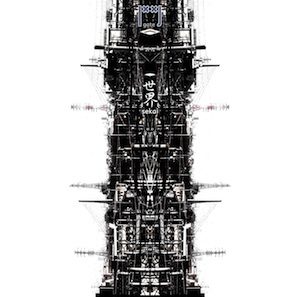
LISTEN
Track List
Part 1: Descent
Part 2: Now
Part 3: Illusions of Emptiness
Part 4: Industrial Speleology
Part 5: Ascent
Gate - Sekai
Gate is an experiment in improvised music by Lajos Ishibashi-Brons, a Dutch philosopher and musician living in Japan. The name of the project, ‘Gate’, summarizes its intended nature: a gate is in between, in between inside and outside, between here and there, between now and then; and a gate is a passageway, both an entrance and an exit, and a point where paths cross. The symbol |˟˟| is a simplification of the ‘broken gate radical’ 鬥, which (on its own) is a Chinese character meaning ‘struggle’, representing another core theme of the project: dissonance, discomfort, distress.
We have asked Lajos his thoughts about his new album on Fluttery Records:
"Bury your romantic proclivities for harmony, for order, for purpose. All of that is illusion, paint. Look at the world, listen. There is beauty in discord, dissonance, disorder, destruction, decay, corruption, contrast, arbitrariness. Life is discord, life is destruction, randomness, change. Look at the world, look at the power- lines, open-pit mines, rivers and lakes, factories and power plants, mountains and roads, buildings and forests, trash dumps and oceans. Look at them clash, interpenetrate, infest, defile. Look at the transformation of landscapes. Look at the haphazard collections of streets and buildings, and at the people living in them. Look at the dirt, the mess, the disharmony. Just look: it’s beautiful. And listen. Open your eyes and ears. Listen to the sounds of the world, to the crashing, grinding, and banging. Embrace the dissonance, the discomfort, the randomness. Those are our sounds, our world. Listen. And travel in sound."
The new album by Gate, “Sekai” (世界, ‘world’), is a mix of four layers of solo improvisation on multiple instruments, one of those layers being a mix itself. The four layers resulted from four recording sessions. The first and longest of these was focused on creating loops, drones, and background noise. Selected material from this session was arranged on the four audio tracks that together form layer 1. Layers 2 to 4 were added one after the other by means of improvisation while listening to the previously recorded layers. These sessions were exactly as long as the finished recording (i.e. 69 minutes and 2 seconds), and no edits or changes to the session recordings were made other than volume adjustments (and a bit of reverb in case of layers 2 and 3). For layers 2 and 3, only acoustic instruments were used (and thus no effects or other electronics). Session 4 made use of electric instruments and a number of effects.
Instruments used include Bassanxi, a four-string instrument (tuned like a bass) combining design elements from both the guzheng (古箏) and huqin (胡琴) families of instruments; Chaĭlaazkhuur, a tea can with a neck, fingerboard, and one string; Hichiriki (篳篥), a traditional Japanese double reed instrument used mainly in Gagaku (雅楽), Japanese classical music; Sousen, an electric string instrument used for sound effects and noises; and Zarazara, a small box with short pieces of bass B-string attached on one end for creating crackling and other noises. Except Hichiriki, all of these instruments were designed and built especially for this project.
“Sekai” comes in two editions. The Original (White) Edition is the original 69 minutes, four-layered session, as it was created and as it was and is intended to be heard. The Black Edition is a remix, cutting up the original in 5 parts each between 12 and 17 minutes. The Black Edition is only available as a download.
FLTTRY051
Release Date: January 14, 2013
© Fluttery Records
Remora – The Heart That Kills

LISTEN
Track List
1 - Live Forever
2 - Lack of Response
3 - Bring You Back
4 - Holding Her Tight
5 - Please Just Leave Me Alone
6 - Let Me Carry Her Body Through The Gates
7 - Hope
8 - Chimes
Remora - The Heart That Kills
Remora has been around since 1996 bringing out post-apocalyptic pop songs to the masses. Dominated by often sole member Brian John Mitchell, Remora is often a sonic surprise – sometimes making walls of guitar noise music & sometimes singing acapella while somehow maintaining the aesthetic that is Remora.
On The Heart That Kills, Remora drifts away from the sci-fi-survival themes often prevalent in the lyrics & instead deals with the emotional apocalypse of the death of a loved one. In 2008 Mitchell pulled his grandmother out of a nursing home & quit his job to take care of her at home doing everything from making her meals to bathing her, by her side more or less 24 hours a day. In October 2011 she had a fall that caused an inner cranial bleed & after a week in a coma with Mitchell lying on the bed next to her holding her hand she died. Recorded within the following month in Mitchell’s bedroom, The Heart That Kills is a direct response to the feelings of anger, remorse, guilt, joy, hope, despair, & loneliness associated with the death of a loved one.
Predominantly The Heart That Kills is a drone record. It clocks in around 72 minutes with all but three of those minutes using two guitars & two bass guitars feeding back as the only sounds. At times the feedback is a somewhat passive presence & at other times it is an aggressive one, rising & falling like hope between labored breaths. Clearly this is not something meant for everyone. The remaining three minutes are split four ways between two acapella tracks (“Live Forever” & “Let Me Carry Her Body Through The Gates”), a glockenspiel track (“Chimes”), & the only traditional song structure on the album (the half funeral dirge/half anthem “Bring You Back”). This is not a fun record, this is not the “post rock party show” that Mitchell toured with five years ago, but it is perhaps the most important record of Remora’s discography.
REVIEWS
Foxy Digitalis / Steve Dewhurst
Remora’s last collection of songs, 2011′s Scars Bring Hope, was an unexpected but wholly enjoyable detour into the world of glum pop. Mostly casting aside the drone he had made his name in, Brian John Mitchell aired his vocal chords and revealed himself to have a fine baritone drawl. The album housed some stirring moments, not least ‘My Brother’s Guns and Knives‘, a surging ode to strength in the face of adversity that sounded like a long-lost Joy Division classic, but it ended with an extended fuzz-out that hinted Mitchell hadn’t forgotten where his bread was buttered just yet.
The unsettlingly earnest rendition of an insurance company jingle that appeared on YouTube earlier this year was Mitchell winking at us sideways. For all his doom and gloom, it seems, there’s a cunning dark humor somewhere underneath. Listening back to Scars Bring Hope, it was there all along. ‘Peanut Butter Cup’, a song I wrote off as quirky filler when I reviewed the album, has since emerged as a favorite. Recording so close to the ocean it sounds as though he’s in danger of being drowned, the wind and waves interfering with his equipment to chronic effect, Mitchell croons foul-mouthed lines to a potential beau like a lovelorn teenager struggling for the appropriate vocabulary. The outcome is disarmingly touching.
I like to think the same perversity was at play when he decided to present The Heart That Kills to Fluttery Records, a label that prides itself on unearthing experimental talent from far-flung places but has so far issued fairly bog-standard post-rock and surprisingly glossy, wide screen electronica. Made up of a series of mega-long, barely wavering drone pieces interspersed with tiny snatches of vocal meandering, The Heart That Kills is funny in its own way. Presented with the chance to exhibit his work to a relatively wide audience, Mitchell has offered up a stubborn, decidedly avant-garde collection that he must have known was going to piss people off or, at the very least, have them scratching their beards.
Beginning with ‘Live Forever’, a fourteen-second, two-line rhyme, the album quickly wavers into a steady electronic drone that lasts for over twenty minutes. As it progresses further, similarly sturdy tones enter the picture at slightly different pitches and Mitchell spends the entirety allowing them to weave around one another. Swell enough, you think, as ‘Bring You Back’ kicks in – all ninety seconds of it – and returns to Scars territory. Only, the ‘You’ in the title is apparently referring to the drone he was messing with and not a lost sweetheart. ‘Holding Her Tight’ is another long exercise in patience, developing out of an industrial churn into an even more stable hum than that in ‘Lack Of Response’. It’s at this point you begin to twig; he’s going to keep doing this, isn’t he…
Well, yes. ‘Holding Her Tight’ soon becomes ‘Please Just Leave Me Alone’. You can chuckle at his choice of title as it whirs on to the twenty-five minute mark and goes almost nowhere. Essentially the sound of feedback being stretched, shifted and layered, it glows occasionally and enters a long fade, like a David Lynch light bulb. Two short ditties – both as intentionally throwaway as each other – sandwich one long last sonic syringe. ‘Let Me Carry Her Body Through The Gates’ is the most substantial, being a dirge aimed heavenwards in a quasi-monastic timbre. ‘Chimes’, which closes the album after what is possibly the most static series of drones here (the eighteen minute ‘Hope’) is notable for its flippancy. It could be a telephone ringing for all Mitchell cares. “Thank you and goodnight,” he’s saying. “What did you expect?”
As a drone record it might not present anything you haven’t heard done before. There are proponents of the art form who, rightly or wrongly, will be held aloft as gods before Mitchell even gets a look. But as a bloody-minded refusal to bow to expectations The Heart That Kills is right up there with the best of them. Did Fluttery Records expect him to turn in another Scars Bring Hope? I kind of hope they did…
Beach Sloth
Austere, sad beauty fills ‘The Heart That Kills’. This consists of giant, brooding drone pieces with spoken, vocal interludes. Vocals appear to break up the dark atmosphere with traces of humanity. Otherwise these drones are heavy. Drone generally moves slowly but on here the evolution is barely perceivable.
Remora takes its time to build some of these pieces up. There are no break downs. Everything is very static. Occasionally the drones seem to focus in and out, becoming more and less intimate. No melodies exist anywhere on the album. A constant downcast mood lingers. Drone tends to linger in the dark recesses of sound. With these songs though that is idea is taken further. Shifts on ‘Lack of Response’ are extraordinarily unsettling. Upper registers on this track lead to a somewhat uneasy hovering above. It feels cold, mechanical and defeated. ‘Please Just Leave Me Alone’ is lonelier. Over the course of 24 minutes it barely registers a hint of a smile or hope. Everything on this track feels doomed. Even the length itself points to a feeling of dread. Patience pays off on this track as it slowly morphs.
There is no rhythm. Interludes remind the listener of the true meaning of these drone pieces. Drone has rarely been this heavily or downcast. Light cannot escape from these giant slabs of slow-moving sound. Rhythms ebb to and fro in the album. Nothing gets resolved by the head. ‘The Heart That Kills’ is a deeply personal, oftentimes gorgeous album.
FLTTRY041
Release Date: June 14, 2012
© Fluttery Records
Gate – Iterations
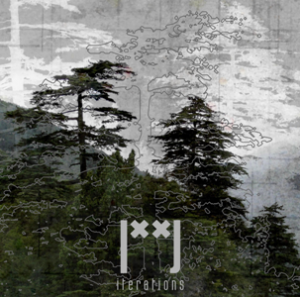
LISTEN
Track List
1 - // 66x2 // 02:05
2 - // 70e // 14:05
3 - // 66x1 // 02:59
4 - // 55e // 19:27
5 - // 72e // 09:54
6 - // 56e // 13:58
7 - // 66x3e // 08:29
Gate - Iterations
|˟˟| (pronounced 'gate') is a Dutch-Japanese free music / noise project based in Tokyo, Japan. The project was started by Lajos in June 2009 as an experiment in solo improvisation on multiple instruments simultaneously, some of which were built (or adapted) especially for this project. In November 2009, Taka joined the project.
'Iterations' is the first release by |˟˟| as a duo. Here is what they say about their new album:
"Freedom is an illusion. Spinoza pointed out that those who think that they are acting freely are usually just ‘carried away by impulse’. In practice, ‘freedom’ often means nothing but ignorance of the causes of one’s actions and desires, and ‘free choice’ is the unrestrained surrender to unconscious impulse. ‘Free improvisation’ is only ‘free’ in that rather limited sense. Music flows, and as soon as an improvising musician steps into the current, there is no (or little) time to consciously decide upon the next note or sound; rather, the musician allows him/herself to be ‘carried away by impulse’.
There is, however, a choice to start or end, or to step in or out of a current, to try to bend it into different directions, or to disrupt it. And by exploring one’s motivations and influences (the aforementioned causes of one’s actions and desires) and becoming aware of those, such choices can (to some extent) escape the grasp of unconscious impulse and be free. The ‘freedom’ of ‘free music’ (rather than just ‘free improvisation’) then, does not lie in the lack of written scores or predetermined musical constructions, but in the consciousness born from (self-) exploration, and the choice of currents and directions based thereupon. ‘Free music’ is the conscious manipulation of uncovered impulse.
‘Free music’ is the means of expression, but not the purpose, of the project |˟˟| (‘gate’). Our music is the result of an exploration of and response to our influences and motivations. Some of these are musical (or aural at least) -- jazz, noise (urban, natural, musical), drone doom, Japanese traditional music, and various other sounds and genres are all reflected in our music -- but perhaps even more important is the exploration of non-musical influences – life in modern society, discomfort and alienation, and the limits of freedom itself.
Human freedom is as illusory as the freedom of the improvising musician, but while ‘free music’ offers an opportunity to escape the grasp of impulse through exploration and conscious manipulation of impulse, the exploration of the causes of one’s actions and desires and the attempt to freely choose direction based on that exploration can only lead to the realization that there is little similar opportunity for freedom in human existence. Human freedom is an illusion, and paradoxically, the discomfort born from that realization is what we (‘freely’) choose to express in our (‘free’) music."
REVIEWS
Whisperinandhollerin / Martin Raybould RATING: 8/10
If you are searching for an easy listening experience, look away now.
Gate is based in Tokyo and started out as a solo vehicle of Lajos Ishibashi-Brons (Lajos). He conceived the project as an experiment in improvisation on multiple instruments, many of which he built himself.
These are often played simultaneously and distorted using loops or delay pedals.
The home made instruments include a sousen, an electric four string instrument used to create drones, and an electric morin khuur, an adaptation of a Mongolian stringed instrument played with a bow. Lajos also plays electric and bass guitar.
After three solo excursions, he has now teamed up with a Dutchman with the very Japanese sounding name of Takahito Hayashi (Taka). The result is Iterations; Gate's fourth release but the first as a duo.
Taka plays soprano sax, flute, ryuuteki (dragon flute), recorders, whistles, and didgeridoo; a relatively normal range of instruments compared to Lajos but by no means played in a conventional manner.
All the music is the product of free improvisation without scores or predetermined ideas and recorded in single takes with no overdubs. In a mission statement improvisation is praised in the following terms: "by exploring one's motivations and influences and becoming aware of those, such choices can (to some extent) escape the grasp of unconscious impulse and be free".
They get deeper into philosophical matters by quoting Spinoza's assertion that those who think that they are acting freely are usually just 'carried away by impulse' and expressing the belief that "human freedom is as illusory as the freedom of the improvising musician".
All this places Lajos and Taka squarely in a Catch 22 situation of striving for freedom of expression cognitive of the fact that freedom itself is a delusion.
You will get the point that this is not music conceived as lightweight entertainment.
This is also evident from the track titles which are identified by numbers and letters (70e, 55e, 72e, 56e, 66 x1, 66 x 2 and 66 x 3) rather than anything so bourgeois as names. Even the is duo's name is actually written as a symbol but is also pronounced and written as Gate.
After reading the philosophy and working methods of 'Gate' and learning that their influences include free jazz, noise, drone, doom and Japanese traditional music, the expectation is that the music itself will be a wild , unhinged cacophony of atonal abandon.
Surprisingly, Iterations is a relatively subdued affair. The long droning tracks evolve slowly, punctuated by saxophone honks and squawks or by eery sound effects. The latter are often akin to flapping of wings or someone searching desperately in a drawer full of metallic objects.
This makes for an undeniably strange and enigmatic album. There are no beats to tap along to or tunes to hum, but if you can live with its abstract concepts the effect is oddly calming.
FLTTRY009
Release Date: August 6, 2010
© Fluttery Records
Clint Listing – In The Minds Of Madness

LISTEN
Track List
1 - Clint Listing & Stephen Petrus (Murderous Visions) - The Dawn of Sorrow
2 - Clint Listing & Lopeholt - Love is Pain
3 - Clint Listing & John Stillings (Steel Hook Prostheses) - Under the Frozen Moon of Tomorrow
4 - 4yrs of Suffering (Clint Listing and Aries both ex As All Die) - Your God is So Proud
5 - Clint Listing & Dana Duffey (Demonic Christ) - Passion Through Conflict
6 - Clint Listing & Ben / DJ Hell Raver (Terrorfakt) - Riders of the Final Dawn
7 - Clint Listing & Derek Rush (Dream into Dust / A Murderer of Angels) - We've Been Forgotten
8 - Clint Listing & Ross Hagen (Encomiast) - Peace Breeds War
Clint Listing - In The Minds Of Madness
Clint Listing creates music as a solo artist in post industrial landscape mix elements of noise, ambient, drone and avant sounds. He has been producing music for twenty-three years. He also writes about music on his website called "Absolute Zero Media"
"That's how we know each other" tells the label owner Taner Torun who also made the artworks and the graphic design of the album. "We send our press letters to Clint as well. He sometimes reviews them. One day, he asked us if we could release his upcoming work."
Clint Listing’s In The Minds Of Madness is a collaboration with some of the favorite artists he has performed with on tour, live events or just impressed him. Projects like Terrorfakt, Dream into Dust, Steel Hook Prostheses, Murderous Visions, Encomiast & Lopeholt. This album spans many genres of the post industrial and experimental landscapes from harsh noise, electronica to post-rock.
The Collaborations:
The opening track, The Dawn of Sorrow is a collaboration with Stephen Petrus of "Murderous Visions". Murderous Vision’s style ranges from dark ambient to death industrial to martial industrial and neoclassical music. The Cleveland project was founded in 2004 as a duo, later became Petrus' solo action.
Track 2, Love is Pain is a collaboration with "Lopeholt" which is a industrial & experimental project from Scotland.
The third one, Under the Frozen Moon of Tomorrow is a collaboration with John Stillings of "Steel Hook Prostheses" which was founded in 1999 by John Stillings then L. Kerr was soon recruited into the project and the project became a duo. Stillings says "I can best describe our sound as heavy electronics, a combination of power electronics, death industrial, dark ambient, and harsh noise."
The fourth child, Your God is So Proud is credited as "4yrs of Suffering" which is a project between Clint Listing and Aries both ex As All Die. They released several works together in which Clint Listing does the vocals, guitar, synthesizer, bass, electronics, samples; and Aries on vocals, samples, percussion.
The fifth track is Passion Through Conflict and it's a collaboration with Dana Duffey of "Demonic Christ" which is a black / death metal band formed in 1992.
Riders of the Final Dawn (the sixth track) is a collaboration with DJ Hell Raver of "Terrorfakt" which is an industrial / power noise project from New York City. Having been influenced by bands such as Controlled Bleeding, Monolith, Neurosis, Merzbow, Manufactura and Synascape, Terrorfakt describes their sound as ranging from “powerful dancefloor anthems to ambient sound-scapes and pure experimental noise structures.”
The seventh track is We've Been Forgotten, which is created with Derek Rush who is known from the projects like "Dream into Dust" "A Murderer of Angels" The projects are between Derek Rush and Bryin Dall whose music is called "ambient and electronic art-fusion is laced with inspiring and intuitive musical pieces designed to create an atmosphere and experience" by Smother.
Peace Breeds War, the final track is a collaboration with Ross Hagen of "Encomiast" which is a dark ambient / noise project came into being around 1999 in Colorado, USA.
"In The Minds Of Madness" has taken two years of blood , sweat and creativity for the people involved in this project. Clint Listing tells that this is the most expansive release of his twenty-three year music career.
REVIEWS
A Closer Listen / Richard Allen
Post-industrial soundscapes are not the most accessible productions, and In the Minds of Madness is not easy listening. The cover simultaneously evokes Joan of Arc, the Salem Witch Trials, and the Apocalypse, and the sounds inside make a fitting match.
Case in point: opening track “The Dawn of Sorrow”, a collaboration with Stephan Petrus of Murderous Visions. This dark, unrepentant drone is a solid wall of sound backed by martial drums, the bastard love child of Raison D’Etre and The Protagonist. If this were the only track on the album, it would still be worth a spin. Listening is like being trapped in a sandstorm with a plague of locusts and a rain of blood. ”Under the Frozen Moon of Tomorrow”, a pairing with John Stillings of Steel Hook Prosthesis, spits waves of noise and desolate electronics into a vat of acid churn. And “Riders of the Final Dawn”, recorded with industrial band Terrorfakt’s DJ Hell Raver, attacks the sound field with harsh distortions and static that sounds like it was fed through static – the refried beans of sonic production. Sudden, unpredictable blasts keep the listener off guard and pleasantly nervous.
Not to slight the other artists involved – each has a distinct appeal. But a series of team-ups amounts to a compilation of sorts, and in such arenas, there are bound to be winners and losers, especially in a field that encourages brutality. The tracks that relent, show mercy, or repeat patterns are shown no mercy themselves. Once the listener has the taste for blood, it must be satisfied. Any sign of weakness, any hesitation, any gentility, and the emperor’s thumb goes down. But for Listing and his efforts, the thumb goes up; fans of extreme music will find much to enjoy here.
Against The Odds / Chris Antonoff
Dark, brooding soundscapes, waves of sonic terror and cold, machinery chants are some of the distinctive features of Clint Listing's latest offering. Clint Listing creates music as a solo artist in post industrial landscape mix elements of noise, ambient, drone and avant-garde sounds. He has been producing music for twenty-three years. In The Minds Of Madness is a collaboration with some of the favorite artists he has performed with on tour, live events or just impressed him. Projects like Terrorfakt, Dream into Dust, Steel Hook Prostheses, Murderous Visions, Encomiast & Lopeholt. This album spans many genres of the post industrial and experimental landscapes from harsh noise, electronica to post-rock.
Sea Of Tranquility / Simon Bray
The appeal of this record will definitely be pretty select consisting of nine drone artists including Clint Listing himself. According to his biography, "Clint Listing creates music as a solo artist in post-industrial landscape mix elements of noise, ambient, drone and avant sounds." It would be true to suggest that In the Minds of Madness does what it says on the tin.
This isn't popular music in any sense of the phrase. It's somewhat experimental focussing on noise rather than melody but when it works as on "Love is Pain" or on the near thirteen minute "Peace Breeds War" it's quite powerful stuff which transports the listener to a different time and space. Equally at times one kind of hopes for some respite from the relentless drone, however, if that is your bag you should enjoy this album a great deal but it is not for the casual listener.
FLTTRY035
Release Date: March 30, 2012
© Fluttery Records
Gate – Deconstructed
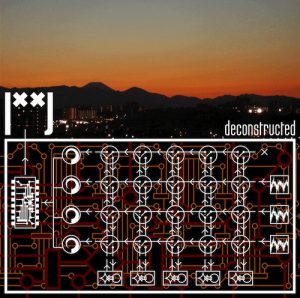
LISTEN
Track List
1 - 81 U.R
2 - 55R
3 - 58R
4 - 75R
5 - 56R
6 - 67R
7 - 72R
8- 65R
9 - 30 Seconds Of Silence
10 - 57R
Gate - Deconstructed
|˟˟| ('Gate') was founded in 2009 as an experiment in 'free music’ in between free jazz, noise, and drone. Initially it was a solo project, making use of a variety of instruments and electronics that were designed and built especially for the project, but later it became a duo with the addition of a wind instrument player, strengthening the project's jazz element. The tracks on |˟˟|’s two previous CDs released by Fluttery Records, ‘No Exit’ (2009) and ‘iterations’ (2010) were selections from such free improvisation sessions; solo in case of ‘no exit’, as a duo in case of ‘iterations’. This CD, ‘deconstructed’, radically deviates from these previous CDs, and from the basic idea behind |˟˟| itself – the tracks on this CD are not unaltered recordings of free music sessions. Rather in the contrary, these are ‘remixes’; noting that that that term does not really capture the extent of de- and reconstruction and (digital) manipulation involved. Nevertheless, it is still very much a |˟˟| CD – the source material for these remixes are the same sessions from which material for ‘iterations’ was selected. Any track on this CD makes use of longer or shorter fragments of sound from one and only one session from that period. Hence the addition of capital letters ‘R’ after the session numbers. The original versions (the source material) of three tracks on this CD can be found on ‘iterations’. These are 55, 56 and 72. The original session recordings of the other tracks can be listened to at last fm. 81U was recorded on a hill top in a park. Only acoustic instruments were used in that session, |˟˟|'s first and only ‘unplugged’ session. 75 was a session of throat singing (mainly kargyraa) and sax. The other sessions were more ‘typical’.
All 'remixes' by Lajos Ishibashi-Brons.
At the time of the original session recordings, |˟˟| consisted of Lajos & Taka. Lajos: strings and noises (7-string bass, guitar, bassanxi, sousen, zarazara, crank-in-a-box, throat singing, and various effects and electronics). Taka: wind instruments and percussion (alto and soprano sax, soprano and sopranino recorders, ryuuteki, flute, bells, nose flute, various other (small) wind instruments, and found objects).
REVIEWS
Caleidoscoop / Jan Willem Broek
The Dutch-Japanese project |˟˟⌡, pronounced as 'Gate', was founded in 2009 for the purpose of solo improvisation on multiple instruments simultaneously. Founder is the Dutchman with philosophical background, Lajos Ishibashi-Brons (married to a Japanese), who moved from Groningen to Tokyo, and is associated with a university there. Lajos creates improvisations with 7-string bass, guitar, sousen, electric morin khuur, zarazara, and various other effects and noise makers. Half a year after the project was founded, the Japanese wind instrument player Taka joined the project, and with his saxophones, flutes, ryuuteki (dragon flute), recorders, whistles, and didgeridoo, he adds an extra dimension to the project's sound. Lajos's philosophical background undoubtedly contributed to the way of making music, although one shouldn't take the term 'music' too literally. He refers to Spinoza who said that freedom is illusion. Nevertheless, they create a free sound, albeit as free as the listener experiences it. What I mean is that the one will hear unstructured cacophony, while the other recognizes patterns and structure. To that extent freedom stays an illusion. Let me take the freedom to say that they manage to create immense tension between recognizable and undefinable sound. They open a 'gate' to your own interpretation. And that is exactly what makes the different CDRs and CDs 'no exit' (2009) and 'iterations' 2010 so fascinating. The sounds almost became secondary to their elaboration. The result is a kaleidoscopic whole of drones, noise, jazz, industrial, doom, and Japanese traditional music, in which the sounds freely 'wander' through indescribable, capricious soundscapes. |˟˟⌡ now released the CD 'deconstructed', which lets go of the founding principles. Philosophy also means time for reflection and seeing things in a different light. Lajos squeezed the material of the previous CD into the straitjacket of the remix. Freedom gone, one would say, but on the other hand, one could also argue that twisted freedom still is freedom, albeit caught in another reality by electronics; an extrapolation of freedom to a new reality; something like that. That new reality consists here in cacophonous versions of earlier material. With this, Lajos moves into the territory of Aube, Merzbow, KK Null, Otomo Yoshihide, God and John Zorn. It is like looking at a 3D image and suddenly seeing depth. Between the gates of the different dimensions, the music of |˟˟⌡ moves in a wayward and most of all captivating way. Incomprehensibly good!
Evening Of Light
Lajos Ishibashi-Brons‘ project |˟˟| is back again this year, but with a new approach. Where his first three albums featured an eclectic mix of rock, industrial noise, and free jazz that was above all improvised, his latest album Deconstructed focuses instead on remixes/deconstructions of recordings from the sessions of the album Iterations.
While sitting down and treating improvised recordings to an overhaul entails the risk of losing a sense of spontaneity, the resulting tracks on this album are certainly not complacent and over-polished affairs. If anything, a good many of the tracks offer even more layering and sounds from many different directions than what we heard on the previous album.
Some tracks, such as the fourth, “75R”, are a bit more laid back, resting on a constant drone and with subdued woodwind improvisations on top. Others, however, dive deep into chaotic and dense compositions, with screechy loops, guitar and woodwind melodies nearly climaxing into cacophony. Overall, there is a pleasant balance between these extremes, and in this way the album combines tendencies that were heard separately on earlier albums, as well as adding a few textures that are only achieved with later editing and mixing.
As such, Deconstructed has a lot to offer to those who enjoyed any or all of |˟˟|‘s earlier releases, but if you’re a newcomer interested in highly experimental sounds on the borders of jazz and extreme offshoots of rock and industrial, this album is recommended just the same.
FLTTRY018
Release Date: April 21, 2011
© Fluttery Records
Gate – No Exit
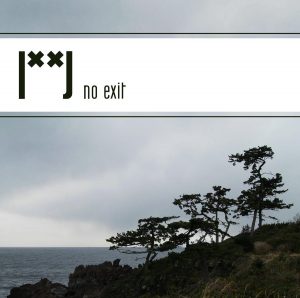
LISTEN
Track List
1 - // 28 ss.rd // 7:12
2 - // 38 ss.mk // 2:40
3 - // 13 ss.rd.gt // 2:49
4 - // 44x ss.rd.bs // 2:54
5 - // 8 ss.rd.mk // 8:47
6 - // 29 ss.rd.gt // 12:19
7 - // 21 ss.rd.mk // 6:28
8 - // 27 ss.rd.mk.bs // 27:50
Gate - No Exit
Gate, also written as |˟˟| creates a wild environment in his debut on Fluttery Records. 'No Exit' is a path to discover his music which stands somewhere between noise and jazz, but which is also influenced by drone, industrial and Mongolian traditional music. In this Tokyo based project everything is product of solo improvisation without any overdubbing; it is completely free music without plans, themes, or melodies; and the music on the CD is - except for some fade-in or out - exactly the same as when it was first created. 'No Exit' is an expression of discomfort, restlessness and oppression. Lajos Ishibashi-Brons (the person behind the |˟˟| project / pronounced as 'gate') says “Modern society expects - even demands - people to be happy. Vast numbers of people walk around with a forced and fake smile, pretending to be what society wants them to be, until they break down. Such fake happiness and its commercial products, such as most pop music, is depressing and nauseating more than comforting. Perhaps my music is a response to and expression of the discomfort caused by this euphoritotalitarianism.”
REVIEWS
Abolute Zero Magazine
Ah Jap Noise its always an adventure no matter who creates it Merzbow, Masonna, Melt Banana and Incapacitants etc. Gate is just the same where they try to add a bit of freeform jazz elements into there nutty collection of tones, rumbles, blips, feedbacks other forms of various broken and rewired pedals and odd laptop effects. No Exit will drive most to the point of ultimate madness but to the fans of this style myself loving this . I would say if the brilliant Jap noise label of SSSM was still around this would be a highlight to its roster. So I'm glad a newer label like Fluttery Records is keeping this style out there to the masses even if there are just a few thousand of us out there. I look forward to many more challenging releases from Fluttery and Gate...
Devil Has The Best Tuna
Gate, also written as |˟˟| (if it was good enough for Prince it's good enough for Lajos Ishibashi-Brons The person behind |˟˟|) creates a improvised masterpiece on his debut on Fluttery Records. 'No Exit' is pitched somewhere between noise and jazz, between drone and industrial with a dose of Mongolian traditional music thrown in for good measure. This Tokyo based project is as close to pure music as you can get.
In Forty
Seven minutes of deafening, near-formless noise opens No Exit. Two minutes of something akin to electronic whale song follows. Track six sounds like some megalithic spacecraft grinding slowly past your window. The improvisational project of Lajos Ishibashi-Brons is certainly not easy – this is an hour of droning, freeform, unsettling noise; anti-music that you might admire, detest, or both.
Connexion Bizarre
The album is a very diverse one. Lajos starts it off with dirty drones and a primitive melody scratching itself out in "28 ss rd". He brings in strings on "38 ss mk" with what I guess is the morin khuur being bowed, the piece later develops into a delightful grating loop which keeps time with an ominous drum beat. "13 ss rd gt" is a complete surprise as it bursts onto your speakers with vigorous pounding rhythmic noise. This is followed by "44x ss rd bs", an introspective piece dominated by echoing plucked strings. Again on a completely different vibe "29 ss rd gt" is a noise ambient piece with claustrophobic engine room sounds and haunting drones.
FLTTRY004
Release Date: November 15, 2009
© Fluttery Records
